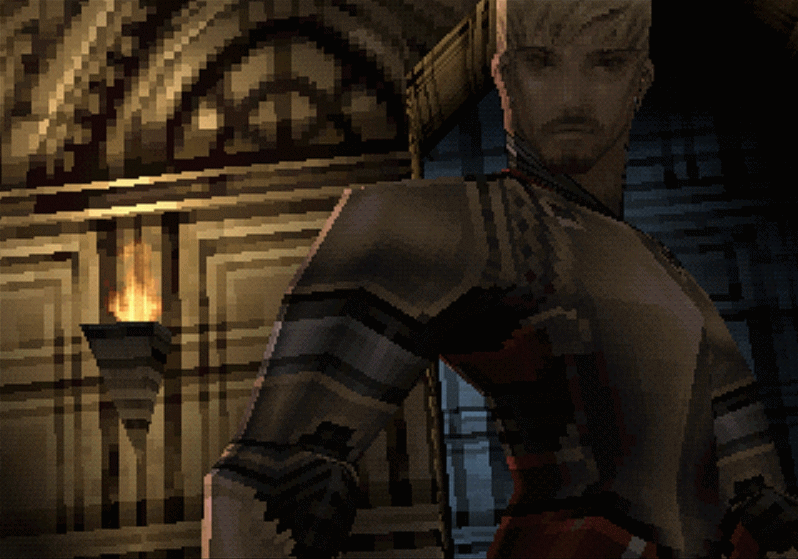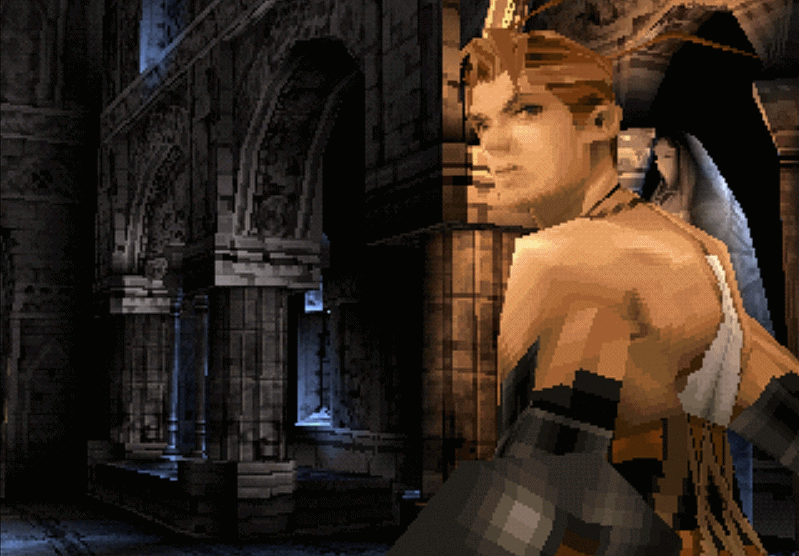I’m fiddling a bit with Playstation 1 emulators.
Most of everyone uses ePSXe, because you can scale up the resolution and prettifying the graphic. Though the result is never as good as people think it is. The images might be dark, so increase brightness to better compare them and maybe open them in separate pages of the browser, on a black background.
This is just scenery, taken from Vagrant Story, a game that looks immensely pretty when properly pixelated.
The first image is ePSXe with scaled up resolution and textures. Notice that the polygons are much better defined. But there’s a complete lack of dithering, so the surfaces are very smooth and plain, giving a washed out, bland look.
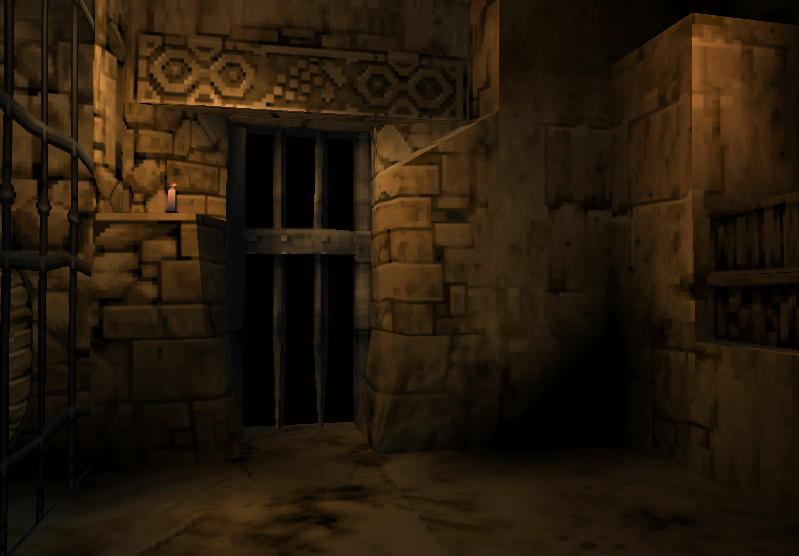
The one below is again ePSXe, but with “software” mode plugin. Both pixels and dithering are back, but it doesn’t look so great. Yet I prefer this to the smoothness of the first image.
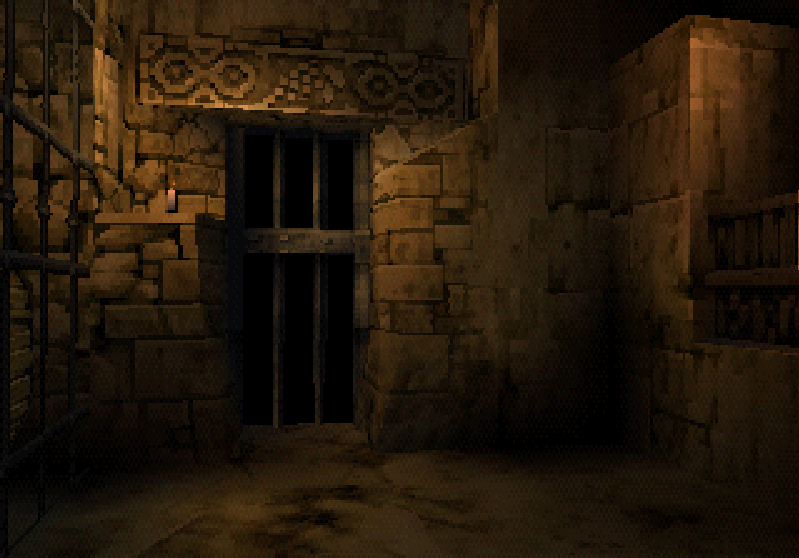
Now we change emulator. This is the one I always used, a Japanese, fairly obscure, emulator named “Xebra” with no configurable plugins and no possibility to “scale up” resolution and textures. This is just emulating with the maximum possible accuracy the original harware. So the following image is the vanilla Xebra. Also notice that Xebra produces slightly more vibrant colors compared to ePSXe. Even if there are big pixels the image blends well and offers a natural effect. The dithering makes surfaces richer, with more depth.

Now I noticed that if you disable OpenGL the image becomes sharper, and it looks way better. Only that it gives some graphic problem and it’s a lot slower in that mode. But then I realized that SweetFX shaders could work on top of the emulator, and so I could sharpen the image to get on OpenGL the same results. The following image is the result of me playing with these shaders. I actually like a lot the result, I toyed with various intensity values, and the image is sharp. The negative side is that, if you look at the bottom of the image, the effect enhances all these tiny squares that are so sharp they actually cover the actual detail by standing out too much.

The last image is again Xebra, with default setting and just a sharpen shader pushed to its maximum value. I think this produces the best effect. The beautiful dithering is there and the tiny squares at the bottom blend much better with the background.
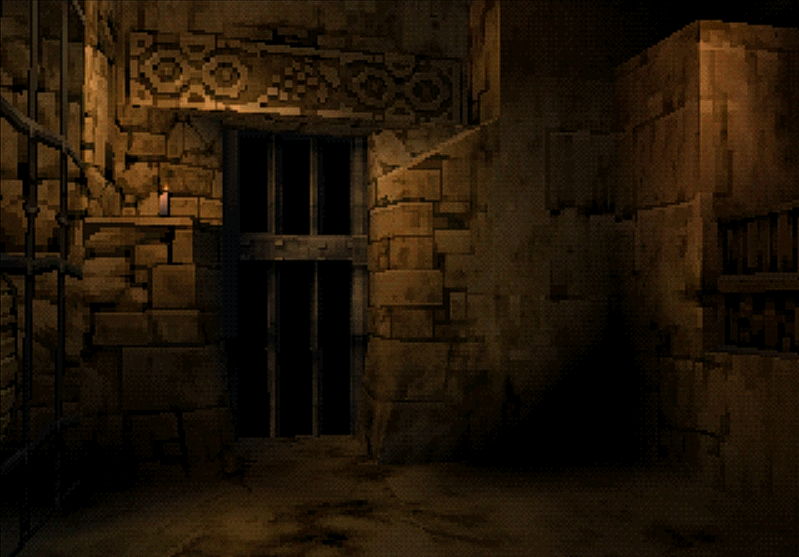
Now another (open in new window for full size). The first is ePSXe in software. It is pretty bad. Then there’s ePSXe at higher resolution. The textures are smoother, but, if you notice, the better resolution also ends up exposing the problems of the source. The face looks a bit unnatural with its pointy nose and chin. The lines are too sharp. That’s a common side effect when you scale up games that weren’t made for that sort of detail. And due to lack of dithering the shoulder only shows diagonal bands of colors that look quite bad. The next quadrant is Xebra with my sharpen shader, to compare with the last quadrant that is vanilla Xebra. In this case the last one produces the best results, the image is softer and more natural. Suggesting that maybe a compromise between the last two is ideal.
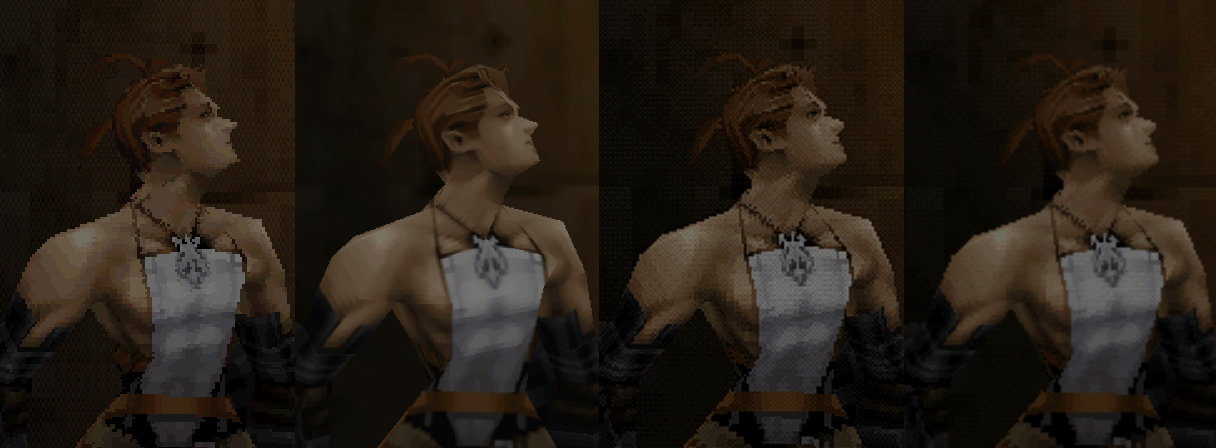
But again, the important point I’m trying to prove is that the smooth, high-resolution option most people use is far from being the best. Pixels are beautiful.

